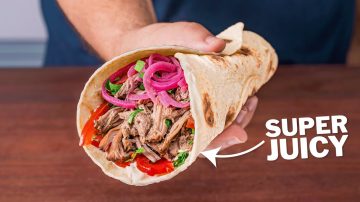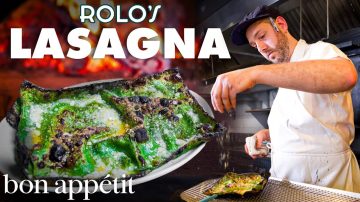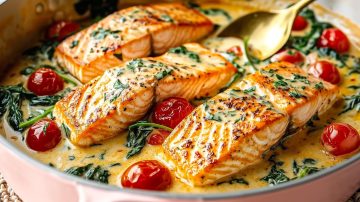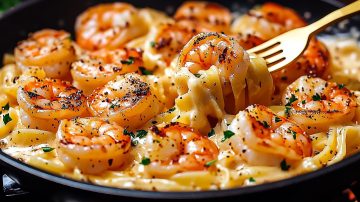Whole Pig Preparation and Pig Skin Ragu
Recipe Overview
Overview
The preparation of a whole pig is a culinary adventure that not only respects the animal but also showcases the chef’s skill in utilizing every part. From the initial breakdown to the final dish, each step is a testament to sustainable cooking practices. The pig skin ragu, a highlight of the menu, is a creative way to use parts of the pig that might otherwise go to waste. The rich flavors developed during the slow cooking process, combined with the crispy chicharrones, create a dish that is both hearty and satisfying.
As the chef meticulously breaks down the pig, you can see the care taken to preserve the quality of the meat. The curing process, which involves precise measurements of salt and spices, is crucial for developing the flavors that will define the dish. The use of fresh herbs and spices, along with the addition of white wine and tomatoes, elevates the ragu, making it a standout dish.
This recipe is not just about cooking; it’s about embracing a philosophy of no waste and celebrating the whole animal. It’s perfect for those looking to impress at dinner parties or for anyone interested in traditional butchery techniques. The end result is a rich, flavorful dish that tells a story of craftsmanship and respect for the ingredients used.
Recipe Details
Steps & Tips
Break down the whole pig into six parts.
Remove the pork skin in one big piece without cutting into the flesh.
Tip: When buying whole animals, look for a good amount of fat coverage for better curing.
Separate the shoulder blade from the copper muscle using fingers and a knife.
Weigh out 96 grams of pure sea salt for curing.
Rub the cure mixture all over the meat.
Tip: Monitor the pH of the meat before curing to ensure proper acidity levels.
Vacuum seal the meat for curing.
Cook down onion, carrot, celery, fennel, and garlic for a couple of hours.
Tip: Cook vegetables slowly to bring out their natural oils.
Tip: Use acidity from wine and tomatoes to balance rich dishes.
Add crushed whole tomatoes to the cooked vegetables.
Add cooked pig skin to the vegetable base and cook for a couple of hours.
Fry dried pig skins until they double in size.
Tip: Season fried pig skins with a spice mix for added flavor.
Serve the fried pig skins on top of the ragu.
Roll out pasta dough using a machine.
Tip: Dust pasta dough with flour while rolling to prevent sticking.
Place potato filling on the rolled pasta and fold it over.
Use a brass fluted cutter to cut the filled pasta.
Tip: Squeeze out excess air when shaping pasta to ensure a good seal.
Cook the pasta in boiling water.
Tip: Taste as you go to adjust flavors, especially with sauces.
Add a kiss of cherry vinegar to the ragu for acidity.
Call tickets and manage tables during service.
Spike the check to indicate it has been completed.
Ingredients
Ingredient: Dairy
→ Substitution: Coconut Cream
Nutrition
Skill Level
Frequently asked questions
Below you will find answers to the most common questions about this recipe.
Got a Recipe Question? Ask Away!
Interesting Tidbits
- •Using whole animals allows for better control over sourcing and quality.
- •Curing meat requires precise salt measurements to ensure flavor and preservation.
- •Pig skin can be transformed into crispy chicharrones, adding texture to dishes.
- •The process of making salumi involves careful monitoring of pH and humidity.
























